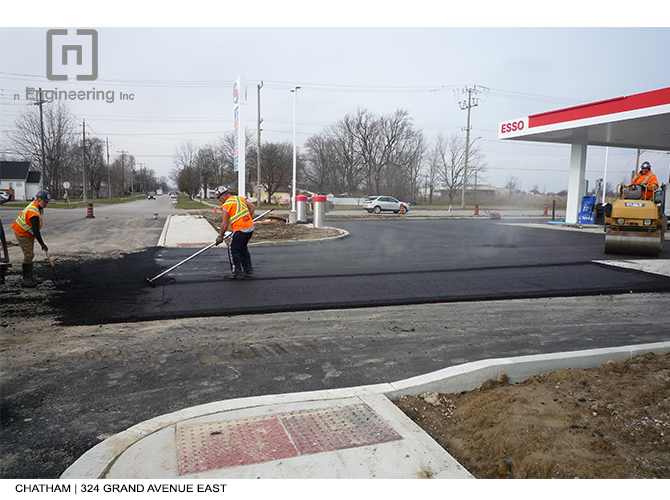In the realm of urban and regional planning, Traffic Impact Studies (TIS) serve as an essential tool to evaluate how new developments affect surrounding road networks. With an increase in development projects across Canada, conducting a Traffic Impact Study Canada is now a standard prerequisite for large-scale developments, especially for residential, commercial, and industrial projects. These studies help municipalities, developers, and local authorities ensure that transportation networks can handle additional traffic while maintaining safety, efficiency, and overall accessibility.
What is a Traffic Impact Study (TIS)?
A Traffic Impact Study is an in-depth analysis that predicts the potential effects of a new or expanding development on the surrounding traffic infrastructure. The goal of a TIS is to ensure that roads, intersections, and other related infrastructure can accommodate increased traffic flow without compromising safety or efficiency. This study examines potential congestion, identifies safety concerns, and provides recommendations for improvements in infrastructure.
For n Engineering, a firm specializing in urban planning and transportation solutions, conducting a Transportation Impact Study Canada helps lay a foundation for sustainable and effective infrastructure development. By integrating the insights from a TIS, authorities and developers can work together to implement adjustments that benefit both existing residents and future occupants of new developments.
Key Objectives of a Traffic Impact Study in Canada
When n Engineering performs a Traffic Impact Study Canada, several core objectives drive the analysis:
- Traffic Flow Management: One of the primary goals is to understand how a development will affect traffic flow. The study considers peak and non-peak hours, analyzing how the proposed project will influence traffic volumes and patterns in the surrounding area.
- Roadway and Intersection Capacity: Evaluating existing road capacity and determining whether it will be sufficient to handle future demand is essential. If additional traffic will exceed capacity, the study outlines potential solutions, such as road widening or intersection improvements.
- Safety Assessment: Ensuring the safety of road users—drivers, cyclists, and pedestrians—is a top priority. A transportation impact study (TIS) includes evaluating accident history, identifying potential risks, and recommending safety enhancements.
- Environmental and Community Impact: A Transportation Impact Study Canada often includes an assessment of potential environmental impacts, including noise, air quality, and greenhouse gas emissions associated with increased traffic volumes.
- Public Transit and Alternative Transportation: A TIS considers the role of public transit, cycling, and walking as viable transportation modes. The goal is to promote sustainable mobility options, which can help alleviate congestion and reduce carbon emissions.
- Mitigation Strategies: Based on the findings, the study suggests possible modifications, such as installing traffic signals, adding turning lanes, or adjusting public transit services. These measures help accommodate future traffic demands without overwhelming existing infrastructure.
The Traffic Impact Study Process
The process of conducting a Traffic Impact Study involves several phases, each of which builds on the previous to create a comprehensive analysis. Below are the key stages that n Engineering follows for conducting a Traffic Impact Study Canada.
1. Initial Data Collection
The first step is to gather existing traffic data. This includes information about current traffic volumes, speeds, and patterns in the area, as well as historical data on accidents and road conditions. In addition, data on public transportation, pedestrian traffic, and cycling routes are collected to understand the complete picture of mobility in the area.
2. Development of Traffic Projections
Next, n Engineering uses statistical models to predict future traffic volumes based on the proposed development’s characteristics, such as its size, type, and anticipated occupancy rates. These projections are adjusted for factors like seasonal changes, population growth, and anticipated land use changes in the surrounding area.
3. Analysis of Impact on Existing Infrastructure
The next phase involves determining how the projected increase in traffic will impact the current road network. This includes evaluating whether roads and intersections have sufficient capacity and whether traffic delays are likely to increase. n Engineering team assesses various traffic metrics, such as Level of Service (LOS), which measures the quality of traffic flow.
4. Safety Assessment
In this stage, the Transportation Impact Study Canada examines potential safety concerns for all road users. The analysis focuses on accident-prone intersections and high-risk areas to identify points where additional safety measures may be necessary. For example, if a development is likely to increase pedestrian traffic, crosswalks and pedestrian signals may be recommended.
5. Recommendation of Mitigation Measures
Once the analysis is complete, n Engineering provides a detailed list of recommendations to mitigate any identified issues. These measures might include adding traffic signals, constructing turning lanes, widening roads, or altering traffic signal timings. The study also addresses potential public transportation improvements and cycling infrastructure to support sustainable transport options.
6. Report Preparation and Presentation
The final step is to prepare a comprehensive report that summarizes the findings and recommendations. n Engineering presents the report to relevant stakeholders, including municipal authorities and planning agencies, to assist them in making informed decisions about the proposed development.
Importance of Traffic Impact Studies for Urban Development in Canada
In Canada, urban development is occurring at a rapid pace, especially in major cities and rapidly growing suburban areas. Without proper planning, increased traffic from these developments can lead to congestion, safety hazards, and strain on public resources. This is why Traffic Impact Study Canada is critical in ensuring that growth is manageable and that the transportation network can accommodate it effectively.
Addressing Congestion Issues
As urban centers expand, traffic congestion becomes a common challenge. A Traffic Impact Study Canada helps developers and city planners identify potential congestion points and make adjustments to avoid bottlenecks. For example, if a new residential complex is being developed in a high-density area, n Engineering may recommend road improvements to handle additional vehicles and prevent traffic slowdowns.
Enhancing Public Safety
Ensuring the safety of pedestrians, cyclists, and motorists is a core responsibility in urban planning. By conducting a Transportation Impact Study Canada, n Engineering can identify intersections and road segments that may require improvements, such as traffic calming measures, better lighting, or additional pedestrian crosswalks. These changes help reduce the likelihood of accidents and create a safer environment for everyone.
Supporting Sustainable Transportation
Canada is moving toward sustainable urban development that prioritizes public transit, cycling, and walking. n Engineering Traffic Impact Study Canada often considers how new developments can support sustainable transportation. For instance, the study may recommend enhanced pedestrian pathways, dedicated bike lanes, or public transit options to help residents avoid car dependency.
Environmental Impact and Air Quality
In densely populated areas, increased traffic can negatively affect air quality and noise levels. n Engineering’s Transportation Impact Study Canada includes recommendations to minimize these impacts. For instance, encouraging alternative transportation options, such as cycling, public transit, or electric vehicle infrastructure, can help reduce greenhouse gas emissions.
Case Studies: Real-World Applications of Traffic Impact Studies in Canada
1. Residential Development in Toronto
A large residential project in Toronto was proposed in an already densely populated area, raising concerns about potential traffic congestion. n Engineering was tasked with conducting a Traffic Impact Study Canada to evaluate the potential impact. The TIS findings led to recommendations for adding turning lanes and adjusting traffic light timings, which improved traffic flow and minimized congestion for both residents and commuters.
2. Commercial Development in Vancouver
In Vancouver, a proposed shopping center required a Transportation Impact Study Canada to assess its impact on nearby roads. The study revealed that additional traffic signals and expanded parking facilities would be necessary to accommodate the increase in visitors. n Engineering’s recommendations were implemented, resulting in a smooth integration of the new center into the surrounding traffic network.
3. Industrial Park in Calgary
A new industrial park in Calgary was anticipated to draw significant truck traffic, raising concerns about road wear and safety. n Engineering conducted a TIS that suggested route adjustments for heavy vehicles and reinforced road surfaces in high-traffic areas. These improvements ensured that the industrial park could operate without imposing undue strain on local infrastructure.
Future Trends in Traffic Impact Studies in Canada
As Canada continues to prioritize sustainable urban growth, the approach to Traffic Impact Study Canada is also evolving. Future trends include the integration of smart traffic technologies, real-time traffic monitoring, and predictive analytics to provide more accurate insights and responsive planning.
Integration of Smart Traffic Technology
Smart traffic lights, adaptive signal control, and vehicle-to-infrastructure (V2I) technology are becoming more common in urban areas. These technologies allow cities to adjust traffic flows in real time based on demand, improving overall efficiency and safety.
Focus on Green Transportation Initiatives
With Canada’s commitment to reducing greenhouse gas emissions, n Engineering is focusing on green transportation initiatives as part of its Traffic Impact Study Canada offerings. This includes assessing the feasibility of electric vehicle charging stations, promoting cycling infrastructure, and enhancing pedestrian-friendly zones.
Enhanced Data Analytics and Predictive Modeling
As data collection technologies improve, n Engineering can leverage advanced predictive models to estimate future traffic patterns with greater accuracy. These models help anticipate changes in transportation needs and allow city planners to make proactive adjustments to infrastructure.
In conclusion, a Traffic Impact Study Canada is an essential component in planning for Canada’s urban and regional development. By conducting a thorough analysis of potential traffic impacts, n Engineering ensures that new developments can integrate smoothly into existing transportation networks while minimizing congestion and promoting safety. As cities continue to grow, the role of Transportation Impact Study Canada will remain pivotal in balancing development with sustainable, efficient, and safe mobility solutions. Through careful planning and a commitment to innovation, n Engineering helps shape the future of Canada’s transportation landscape, ensuring it remains resilient, adaptable, and conducive to healthy community growth.

